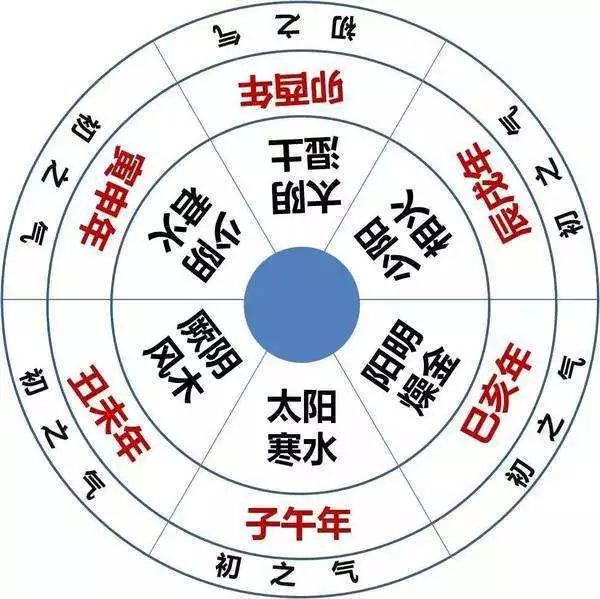Introduction: “Six Yin” refers to the excessive or insufficient presence of six climatic factors in nature: wind, cold, heat, dampness, dryness, and fire. When these factors occur out of season or when the body’s resistance decreases and cannot adapt to these changes, they become pathogenic evil qi. This is different from the meaning of “Six Qi.”


Basic Concept of Six Yin
1
Six Qi and Six Yin
Six Qi: The so-called Six Qi, also known as the Six Origins, refers to the six normal climatic factors in nature: wind, cold, heat, dampness, dryness, and fire. The changes in Six Qi are referred to as the Six Transformations. These normal climatic changes are conditions for the growth of all things and are harmless to the human body. Due to the body’s self-regulatory mechanisms during life activities, it develops a certain adaptability, allowing the body’s physiological activities to align with the changes in Six Qi. Therefore, normal Six Qi generally does not easily cause illness.

Six Yin: The so-called Six Yin refers to the collective term for the six external pathogenic factors: wind, cold, heat, dampness, dryness, and fire. The shifts in yin and yang, the alternation of cold and heat, and climatic changes all follow certain rules and limits. If climatic changes are abnormal, leading to excessive or insufficient Six Qi, or if there are climatic factors present out of season (such as cold in spring when it should be warm, or heat in winter when it should be cool), and if the changes are too abrupt (such as sudden cold or warmth), exceeding certain limits, the body may not be able to adapt, resulting in the onset of disease.
When Six Qi transforms from being harmless to harmful, it becomes a pathogenic factor. The Six Qi that can lead to disease is referred to as “Six Yin.” While climatic changes and the occurrence of diseases are closely related, not everyone will become ill due to abnormal climatic changes. Some individuals can adapt to these changes without falling ill, while others cannot adapt and do become ill. For the former, the same abnormal climatic change is considered Six Yin. Conversely, when climatic changes are normal, even in favorable conditions, some individuals may still fall ill due to low adaptability. This normal change in Six Qi can also be considered “Six Yin” for those who are already ill.
Thus, it is evident that Six Yin exists objectively in both abnormal and normal climatic conditions. The determining factors here are the differences in individual constitution and the strength of righteous qi. Only when the body’s righteous qi is insufficient and resistance decreases can Six Qi become pathogenic factors that invade the body and cause illness. In this sense, Six Yin is a category of pathogenic factors that disrupt the relative dynamic balance of the body due to changes in Six Qi, leading to external pathogenic diseases. “Six Yin” is also known as “Six Evils“.

2
External Six Yin and Internal Five Evils
External Six Yin are pathogenic factors of external diseases, referred to as external evils, while Internal Five Evils refer to the pathological changes caused by the imbalance of yin, yang, qi, and blood in the organs, which include internal wind, internal cold, internal dampness, internal dryness, and internal heat (fire), belonging to the category of pathophysiology. Although the clinical manifestations of Internal Five Evils are similar to those of the pathogenic characteristics and pathological responses of wind, cold, dampness, dryness, and fire, they are distinguished from the external evils of wind, cold, dampness, dryness, and fire (heat) by the prefix “internal,” hence referred to as “Internal Five Evils“. The clinical manifestations of Internal Five Evils generally do not present with exterior symptoms, often showing either deficiency or excess patterns, or a mixture of both. When External Six Yin act on the body, they cause dysfunction in the yin, yang, qi, and blood of the organs, leading to pathological changes that often present with exterior symptoms and are mostly excess patterns. Pure summer heat evil generally does not show exterior symptoms, but when combined with damp evil, it is referred to as summer dampness, which does present with exterior symptoms. Only when external evils penetrate directly can interior symptoms be observed.
External Six Yin and Internal Five Evils are one as pathogenic factors and the other as pathological results. Although they are distinct, they are closely related. When Six Yin harm the body, they affect the interior, damaging the organs, which can easily lead to the harm of Internal Five Evils. Conversely, when Internal Five Evils cause dysfunction in the organs, they can also easily be affected by the evils of Six Yin.

